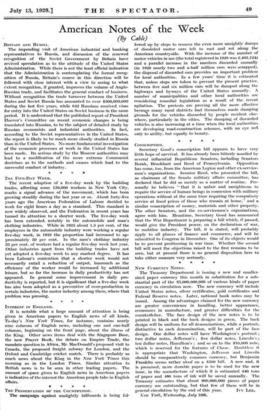THE FIVE-DAY WEEK.
The recent adoption of a five-day week by the building trades, affecting some 150,000 workers in New York City, marks a signal advance of the movement, which has been growing steadily during the last year or so. About forty-five years ago the American Federation of Labour decided to work for eight hours a day as a standard. This standard is now widely observed, and the Federation in recent years has turned its attention to a shorter week. The five-day week has been extended, notably in the automobile and man's clothing industries. While in 1925 about 1.5 per cent. of the employees in the automobile industry were working a regular five-day week, in 1928 the proportion had increased to ap- proximately 30 per cent. In the men's clothing industry 33 per cent. of workers had a regular five-day week last year. Other industries apart from the building trades have not yet adopted a five-day week to any marked degree. It has been Labour's contention that a shorter week would not necessarily entail a reduction of output, inasmuch as the efficiency of the worker would be increased by additional leisure, but so far the increase in daily productivity has not appeared. In general some improvement in daily pro- ductivity is reported, but it is significant that a five-day week has also been adopted as a preventive of over-production in certain industries, the motor industry among them, where that problem was pressing.
* * *
































 Previous page
Previous page